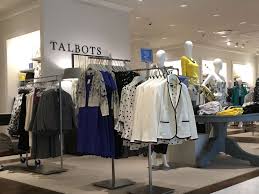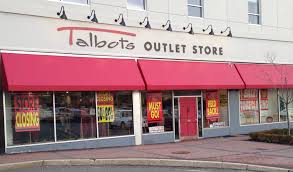Introduction
If you’ve noticed a Talbots sign coming down in your local shopping center, you’re not alone. News of Talbots store closures has sparked concern among loyal customers who’ve relied on the classic women’s retailer for decades. Known for its timeless fashion, quality materials, and customer-first approach, Talbots has been a staple in American retail since 1947. But with the changing retail landscape and the continued rise of online shopping, even long-standing brands aren’t immune to market pressures. So, what’s really going on with Talbots? Is the company shutting down completely or simply restructuring to stay relevant in today’s fashion world? Let’s explore the real story behind Talbots’ store closures, the reasons behind the downsizing, and what it means for the brand’s future.
1. A Legacy of Style: The Rise of Talbots
Talbots began in 1947 as a small clothing store in Hingham, Massachusetts, founded by Nancy and Rudolf Talbot. It quickly gained attention for offering polished, high-quality apparel designed for women who appreciated sophistication and comfort. By sending catalogs to upscale households across the U.S., Talbots became one of the first retail brands to master the art of direct mail marketing — a move that expanded its reach nationwide.
Through the decades, Talbots grew into a powerhouse of classic American style, celebrated for its crisp blouses, structured blazers, and iconic red doors that welcomed shoppers into over 500 stores across the country. Its target audience — professional women and fashion-conscious consumers over 35 — found reliability and refinement in every piece.
However, like many legacy retailers, Talbots faced mounting challenges as consumer behavior evolved. Fast-fashion competitors, e-commerce growth, and changing preferences toward casualwear all started to chip away at its once-dominant position. Despite maintaining loyal customers, the brand found itself at a crossroads: adapt or risk fading into retail history.
2. The Retail Shift: Why Talbots Is Closing Stores

The recent wave of Talbots store closures isn’t a sign of total collapse but part of a strategic realignment within the company’s broader operations. The retail industry has been undergoing seismic changes for more than a decade, and Talbots is no exception.
Several key factors have driven these closures. First, the ongoing shift toward online shopping has dramatically reduced foot traffic in physical stores. Talbots’ core demographic — while traditionally more inclined to shop in person — has increasingly embraced digital shopping, especially since the pandemic. The company’s e-commerce business has grown, but maintaining underperforming stores became unsustainable.
Second, the rising costs of retail real estate, wages, and inventory management have put pressure on profits. Many of Talbots’ stores are located in suburban malls, which have seen declining traffic and higher vacancies in recent years. Closing these stores allows Talbots to redirect funds into digital upgrades and new marketing strategies.
Lastly, the brand has been focusing on efficiency — optimizing store locations in areas with stronger sales performance and consolidating underperforming regions. While disappointing to longtime shoppers, this approach reflects a broader retail trend toward digital-first strategies designed to ensure long-term survival.
3. How the Pandemic Accelerated Change
COVID-19 didn’t just shake up global health systems — it transformed how consumers shop. For Talbots, the pandemic accelerated challenges that had been building for years. Temporary store shutdowns in 2020 forced the company to pivot quickly toward online operations, and while Talbots did a commendable job transitioning to digital sales, many physical stores struggled to recover afterward.
Even as restrictions lifted, shoppers’ priorities changed. Consumers began favoring convenience, home delivery, and casual styles over formal business attire. Talbots, known for its workwear staples and refined looks, had to adjust its collections to include more versatile, comfortable options.
At the same time, the company faced supply chain disruptions, inventory shortages, and increased costs in materials and logistics — all of which strained profitability. To stabilize finances, Talbots began scaling back its physical footprint, closing select locations that no longer fit its post-pandemic strategy.
Despite these hurdles, Talbots’ online store saw impressive growth. The company expanded its e-commerce offerings, added more digital styling tools, and improved its loyalty program to attract online shoppers. This shift toward digital-first retailing has helped Talbots remain relevant, even as its physical presence contracts.
4. The Role of Sycamore Partners and Corporate Restructuring

A major factor behind Talbots store closures can be traced to its ownership under Sycamore Partners, a private equity firm specializing in retail investments. Sycamore acquired Talbots in 2012, with the goal of modernizing its operations and restoring profitability.
Under Sycamore’s management, Talbots has undergone several internal restructuring efforts aimed at reducing debt, cutting costs, and improving operational efficiency. This often involves closing underperforming locations and reinvesting in high-performing stores or digital infrastructure.
While store closures may seem negative at first glance, they’re part of a broader, data-driven strategy to ensure the company’s longevity. By focusing on profitable markets and enhancing its e-commerce capabilities, Talbots is streamlining its business to align with modern shopping habits.
It’s also worth noting that Sycamore Partners owns other well-known retail brands, including Ann Taylor, Loft, and The Limited. Many of these brands have undergone similar transformations — scaling down physical stores while strengthening online engagement. This pattern suggests that Talbots isn’t failing; it’s evolving under a more sustainable model designed for the digital age.
5. What Store Closures Mean for Employees and Shoppers
While Talbots’ restructuring makes business sense, it has real consequences for employees and loyal customers. Store closures mean job losses for store associates, managers, and support staff. For many, Talbots wasn’t just a workplace but a community built on long-term relationships with returning customers.
For shoppers, closures can feel like losing a familiar and trusted shopping destination. Many customers enjoyed the in-store experience — browsing fabrics, trying on outfits, and receiving personalized service from knowledgeable staff. However, Talbots is trying to bridge this gap through enhanced digital experiences.
The company has invested in online styling tools, improved customer service chat features, and a more seamless mobile shopping experience. Additionally, Talbots continues to offer generous return policies and loyalty benefits that carry over between online and in-store purchases.
In markets where stores remain open, Talbots is focusing on creating a more premium, boutique-like experience. The brand’s goal is to blend the warmth of traditional retail with the efficiency of digital commerce — a balance that could define the next chapter of its success story.
6. The Future of Talbots: Reinvention, Not Retirement

Despite headlines about Talbots store closures, the company isn’t going away anytime soon. In fact, many retail analysts see Talbots’ current moves as part of a long-term reinvention strategy rather than a decline.
The company has been actively expanding its digital presence, improving inventory management, and refining its product lines to appeal to both long-time customers and younger, style-conscious shoppers. New seasonal collections emphasize versatility — clothing that transitions easily between work, home, and social settings.
Talbots is also exploring sustainability initiatives, such as more eco-friendly materials and responsible sourcing practices, aligning with modern consumer values. Combined with its robust e-commerce growth, these initiatives position Talbots to thrive in a competitive, fast-changing fashion industry.
While some physical locations will close, others are being redesigned with smaller footprints and upgraded aesthetics to deliver a more curated shopping experience. This signals that Talbots is learning from the retail challenges of the past decade — and preparing for a stronger, leaner future.
Conclusion
So, what’s the truth about Talbots store closures? The brand isn’t vanishing — it’s transforming. In a rapidly changing retail environment, Talbots is strategically scaling down its physical footprint to focus on digital growth, profitability, and customer engagement. While some stores have closed, the company continues to serve shoppers through an expanded online presence and select flagship locations. For loyal fans, this evolution means a new way to experience the timeless elegance and quality Talbots has always offered. The red doors may be fewer, but the brand’s spirit of classic style and sophistication continues to shine — just in a more modern form.